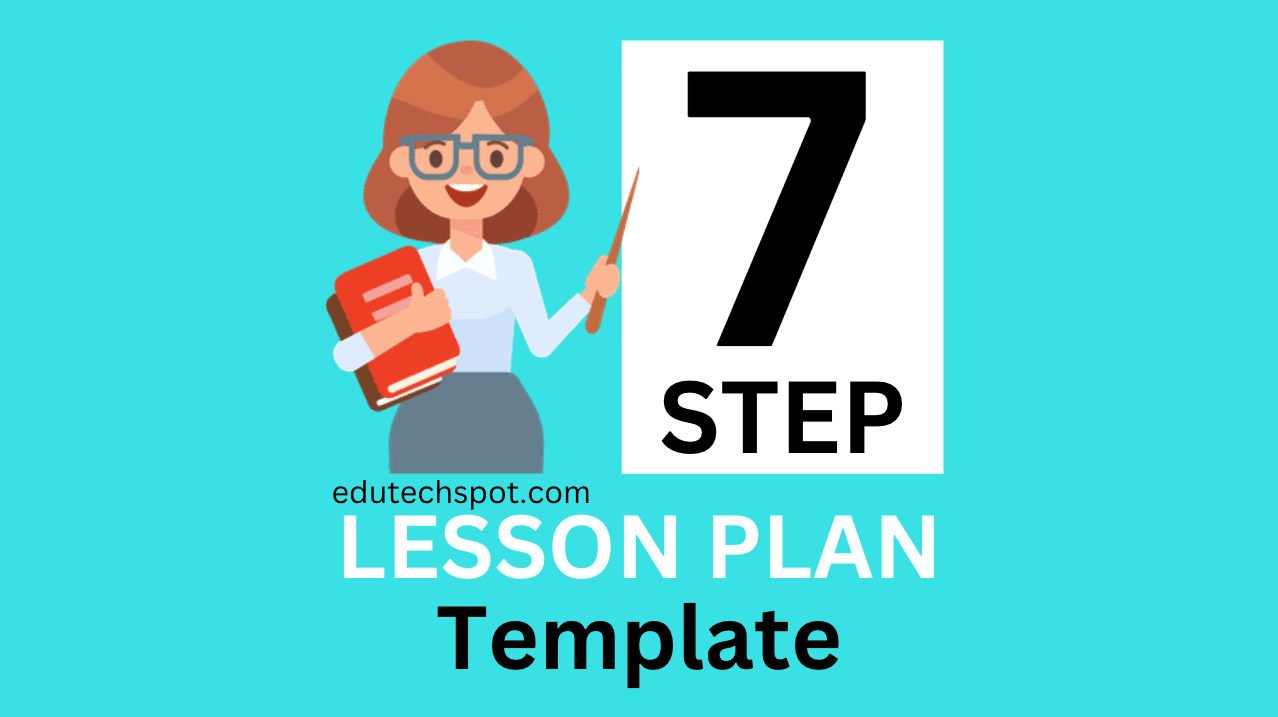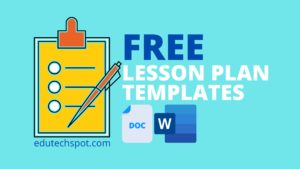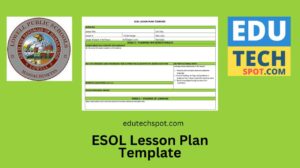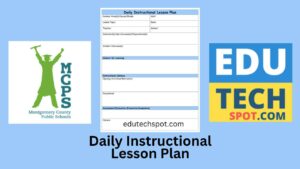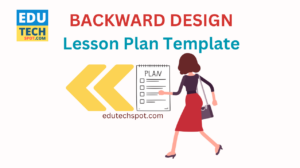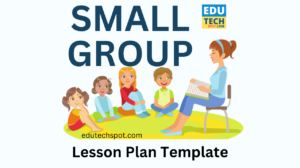7 Step Lesson Plan Template for fellow teachers. Hey there, fellow educators! Lesson planning might sound like a big deal, but trust me, it’s super important and not as hard as it seems. Today, we’re going to dive into a straightforward 7-step lesson plan template that will make your teaching life a whole lot easier. I know that many visitors to edutechspot are looking for this type of lesson plan template, so here I try to do my best for you all. I share some 7 Step Lesson Plan Template as well as considerations and guides when you want to create it on your own.
What is 7 Step Lesson Plan?
A 7-step lesson plan is a structured way for teachers to organize lessons. It starts by saying what students should learn. Then, it checks what they already know and uses interesting ways to teach, like games or group work. The teacher makes clear materials and adjusts them to suit different learning styles. During the lesson, the teacher keeps an eye on how students are doing and changes things if needed. After the lesson, the teacher thinks about what worked and what can be better for next time. This plan helps teachers teach well and makes learning fun for students.
Step 1: Define Learning Objectives: Start by figuring out what you want your students to learn. We call these “learning objectives.” Make them clear and not too complicated. Like, what’s the main thing you want your students to know by the end of the lesson?
Step 2: Assess Prior Knowledge: Before you start teaching, find out what your students already know about the topic. It’s like a quick check-in to understand where everyone’s at. Ask questions or do a simple activity to see what they already understand.
Step 3: Choose Engaging Teaching Methods: Teaching shouldn’t be boring, right? Mix it up! Use different ways to teach – maybe a short video, group activities, or even a fun game. The more interesting, the better your students will learn.
Step 4: Develop Clear Instructional Materials: Create materials that match what you’re teaching. Keep it simple and clear. Maybe use pictures or diagrams to help explain things. Make sure your students can look at it and get what you’re saying.
Step 5: Implement Differentiation Strategies: Remember, everyone learns differently. Some students like to read, others like to listen, and some like to do stuff. Try to teach in different ways so that everyone can understand. It’s like having a few tricks up your sleeve!
Step 6: Monitor and Assess Student Progress: Keep an eye on how your students are doing during the lesson. Are they getting it or feeling lost? You can ask questions, check their work, or use simple quizzes. This way, you can help them right away if they need it.
Step 7: Reflect and Adjust: After the lesson, take a few minutes to think about how it went. What worked well? What could be better? It’s like a little teacher meeting with yourself. Adjust your plan for next time based on what you learned.
The Benefits
Using a 7-step lesson plan has many good things for teachers. It helps to organize the class well and make sure students know what they should learn. The plan includes interesting ways to teach, and it considers different kinds of learners. Teachers can watch how students are doing during the lesson and change things if needed. After the lesson, they think about what worked and what can be better for next time. This helps teachers teach better and makes learning fun for students.
And there you have it – a simple 7-step guide to making awesome lesson plans. It’s not rocket science, just good teaching! Give it a try, and you’ll see how much smoother your lessons can be. Happy teaching, everyone!
